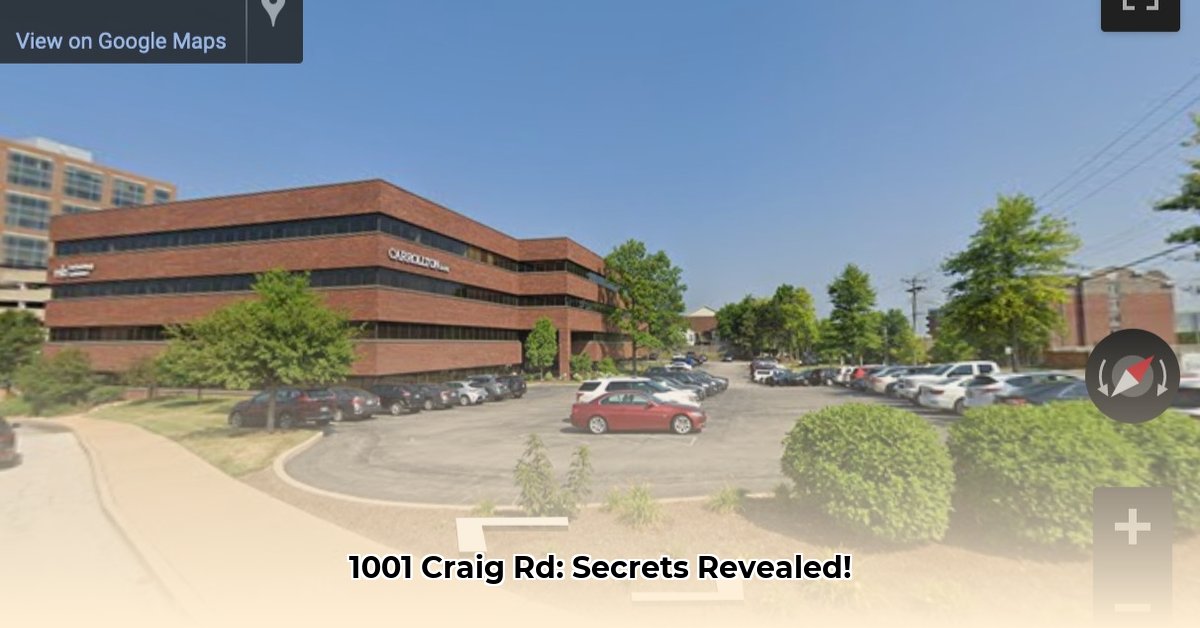
Delving into the History of 1001 Craig Rd
Have you ever wondered about the stories hidden within the walls of an ordinary-looking building? This article explores the potential history of 1001 Craig Road in St. Louis, Missouri, imagining the journey of uncovering its past and the impact it's had on its neighborhood. We'll explore how researchers might approach such an investigation, weaving together historical records with personal accounts to paint a vivid picture of this St. Louis address.
Unearthing the Past: A Historical Detective Story
Our hypothetical investigation begins in the city archives – a treasure trove of forgotten stories. Imagine sifting through dusty ledgers, fragile newspapers, and faded photographs, each document a potential clue whispering tales of the past. We would search for property records, building permits, old city directories, and newspaper clippings mentioning the address, piecing together the building's original purpose, early occupants, and transformations over time. What secrets might these documents unveil?
Could 1001 Craig Rd have been a post-war family home, reflecting the city's expansion? Or perhaps a bustling local shop, integral to the neighborhood's economy? We might discover the names of its first owners, their professions, and even glimpses into their lives – details that bring history to life.
Oral Histories: Listening to the Echoes of the Past
Next, we'd seek out the memories of those who actually know the address. Interviews with long-term residents of the Craig Road neighborhood would be invaluable. Their firsthand accounts, filled with personal anecdotes and cherished memories, would fill the gaps left by incomplete historical records. These living stories would add a human element, enriching our understanding of the building and its place in the community. Imagine hearing tales of family gatherings, neighborhood events, or unexpected incidents that shaped the building's story. Isn't it fascinating to consider the untold narratives held within these walls?
A Timeline of Transformation: Tracking the Building's Evolution
By analyzing the gathered evidence, we could create a chronological timeline of the building's existence. We might uncover evidence of renovations, expansions, or even complete rebuilds. Perhaps a simple bungalow transformed into a multi-family dwelling, reflecting changing family structures or neighborhood demographics. These physical changes would likely mirror broader economic and social shifts in the neighborhood and the city.
The Building's Impact: Ripple Effects on the Community
A building's story never exists in isolation. How did the building's use influence the surrounding area? Did it stimulate economic growth? Was it a hub for community interactions? Did it attract specific types of businesses? The answers to these questions would illuminate the building's far-reaching impacts, revealing its role in the neighborhood's social and economic fabric. How did its presence shape the very character of its surroundings over the years?
Connecting with the People: Unveiling Personal Stories
The true heart of this investigation lies in the people connected to 1001 Craig Rd. Did any notable figures – famous or locally influential – reside there? What were their contributions to the community? Unearthing these untold stories transforms a mere address into a vibrant portrait of human experience within a specific place and time.
Conclusion: Weaving Together the Threads of Time
By combining archival research with oral histories and a critical analysis of all available information, we can build a comprehensive understanding of 1001 Craig Rd. We would weave together facts, anecdotes, and interpretations to create a compelling narrative – a story that transforms a seemingly ordinary address into a window into St. Louis's rich and multifaceted past. The investigation continues, and perhaps, with more information, the full story of 1001 Craig Rd will emerge in even greater detail. This “what-if” scenario highlights the potential for uncovering hidden history and the power of local stories to enrich our understanding of the places we inhabit.